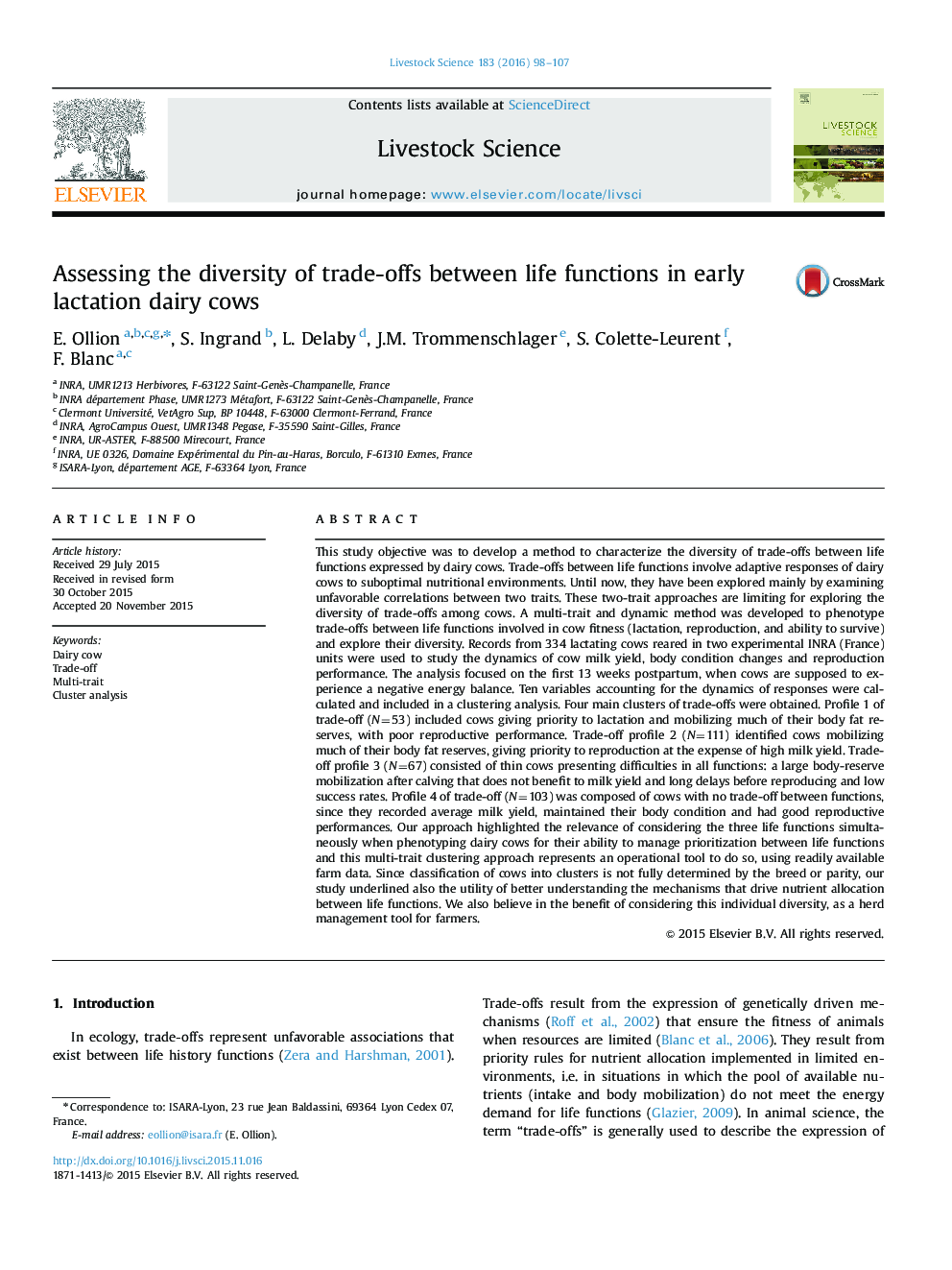| Article ID | Journal | Published Year | Pages | File Type |
|---|---|---|---|---|
| 2446958 | Livestock Science | 2016 | 10 Pages |
•We developed a method to cluster dairy cows on their trade-offs between functions.•Our approach jointly analyze lactation, reproduction and body reserves dynamics.•The diversity of trade-offs profiles is not fully explained by breed, parity and diet.•Accounting for trade-offs in genetic selection can help assessing cows' robustness.
This study objective was to develop a method to characterize the diversity of trade-offs between life functions expressed by dairy cows. Trade-offs between life functions involve adaptive responses of dairy cows to suboptimal nutritional environments. Until now, they have been explored mainly by examining unfavorable correlations between two traits. These two-trait approaches are limiting for exploring the diversity of trade-offs among cows. A multi-trait and dynamic method was developed to phenotype trade-offs between life functions involved in cow fitness (lactation, reproduction, and ability to survive) and explore their diversity. Records from 334 lactating cows reared in two experimental INRA (France) units were used to study the dynamics of cow milk yield, body condition changes and reproduction performance. The analysis focused on the first 13 weeks postpartum, when cows are supposed to experience a negative energy balance. Ten variables accounting for the dynamics of responses were calculated and included in a clustering analysis. Four main clusters of trade-offs were obtained. Profile 1 of trade-off (N=53) included cows giving priority to lactation and mobilizing much of their body fat reserves, with poor reproductive performance. Trade-off profile 2 (N=111) identified cows mobilizing much of their body fat reserves, giving priority to reproduction at the expense of high milk yield. Trade-off profile 3 (N=67) consisted of thin cows presenting difficulties in all functions: a large body-reserve mobilization after calving that does not benefit to milk yield and long delays before reproducing and low success rates. Profile 4 of trade-off (N=103) was composed of cows with no trade-off between functions, since they recorded average milk yield, maintained their body condition and had good reproductive performances. Our approach highlighted the relevance of considering the three life functions simultaneously when phenotyping dairy cows for their ability to manage prioritization between life functions and this multi-trait clustering approach represents an operational tool to do so, using readily available farm data. Since classification of cows into clusters is not fully determined by the breed or parity, our study underlined also the utility of better understanding the mechanisms that drive nutrient allocation between life functions. We also believe in the benefit of considering this individual diversity, as a herd management tool for farmers.
